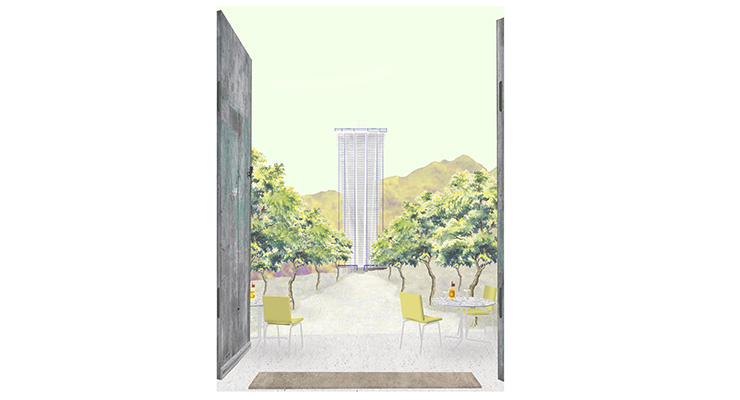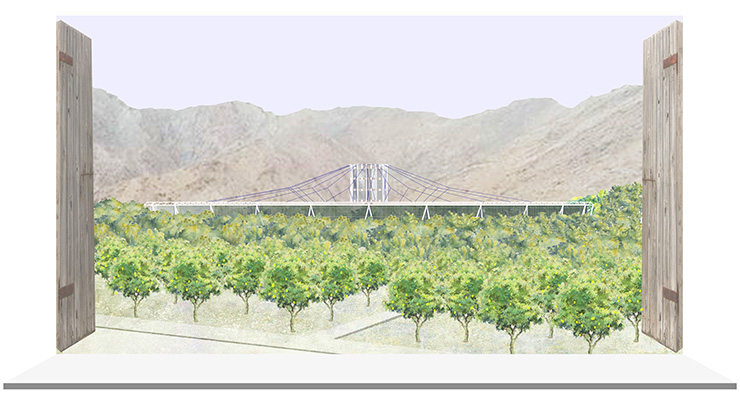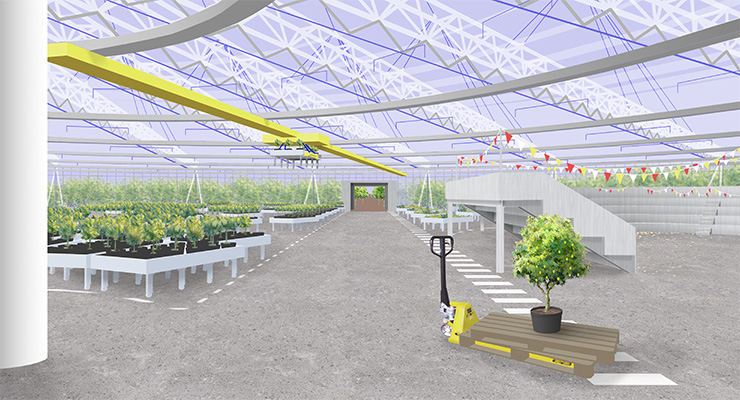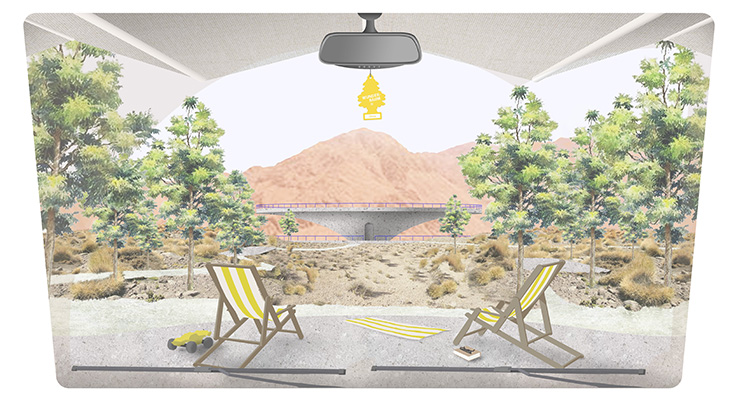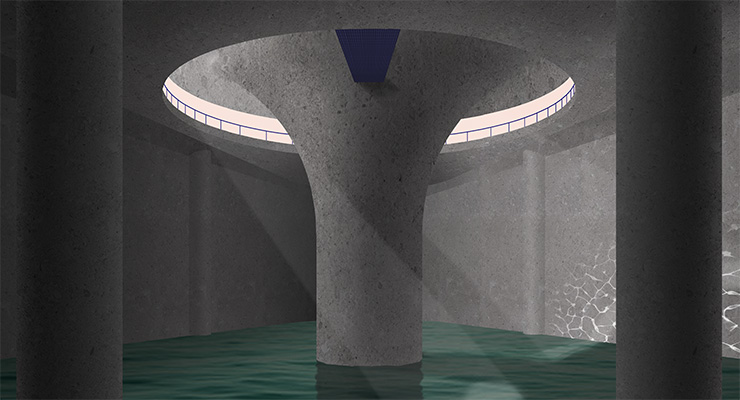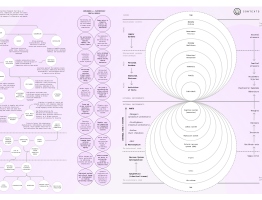Diplomprosjekt
Vår 2022
Institutt for urbanisme og landskap
An architectural approach to the water scarcity in southern Spain.
The aim of this diploma has been to show an architectural approach to the ongoing water crisis in the region of Murcia (Spain). The three projects each tackle three different challenges related to water scarcity: how to obtain more of it, how to use it in a more efficient manner and how to deal with flooding. Additionally the three proposals will relate to the social context by including programs that can involve and include the local community as well as the visiting tourists. The town of Ricote has been chosen as a site because it represents many of the challenges related to the water shortage as well as being a tourist attraction with rich history.
The first project is situated near the entrance to the valley of Ricote, on the top of a hill with a view towards the town. Today the site contains the remains of an old abandoned hotel that recently has been proposed to be remodeled. Since this will be the first meeting with the town of Ricote, it is chosen as the site to introduce the first step of the water supply chain: How to get more water. In order to acheiv this, a water harvesting tower also known as an air well is proposed on the site. In addition the tower will also serve as a viewing platform for visiting tourists. The tower will supply the new hotel with water as well as the new proposed nursery further down in the valley. The water is produced by cooling down the hot, moist air using cooling panels. This creates condensation on the panels that can be collected. The panels are tilted so that the water will run off and have a hydrophilic coating on one side and an insulating layer on the other. This process has traditionally been highly energy consuming and inefficient, but with recent advances in material technology and sustainable energy sources the option has become more reasonable
The second project is a fruit tree nursery. The structure will also host the social programs already present on the site. This includes a funeral home, a community space and a kindergarten. The valley of Ricote is known for their lemon production and this facility will provide the entire valley with all the new trees that are planted each year. The agriculture sector in the Segura basin consumes around 86% of all available water resources. Even if an efficient irrigation method is used most of the water is lost to evaporation as a result of photosynthesis. In open air farming this water is almost impossible to recover. That is why a nursery with a sealed closed hydrological system is proposed to illustrate an alternative method of farming where the used water can be recaptured and reused. The water demand for growing lemon trees is greatest during the plant’s first years of growth and a nursery will take advantage of the water-saving potential during this period.
The last of the three projects tackles some of the many challenges related to flood. Even though the Segura basin receives a scarce amount of rain during a year, it is not uncommon that most of the annual rainfall comes as torrential rain during short periods of time. This has led to many disastrous floods and preventive measures are constantly being taken into action in order to prevent new ones. In addition to constructing flood barriers the main strategy has been to channel the flood water towards areas where it poses a lower threat, mainly towards the Mediterranean sea. This is being achieved by straightening parts of the river and introducing parallel flood channels. Even though this decreases the amount of incidents it also increases the potential harm should an extreme situation occur. The project on the 3rd site illustrates an alternative option to this strategy. By capturing and storing the water locally, in an underground cistern at the lower end of the valley, it is possible to limit the amount of water that could cause a potential overflow further downstream. The space above the cistern will be utilized as a RV-park for visiting tourists. During drier periods the water can either be used locally, transported to other areas through the Tajo-Segura aqueduct or released slowly into the Segura river.
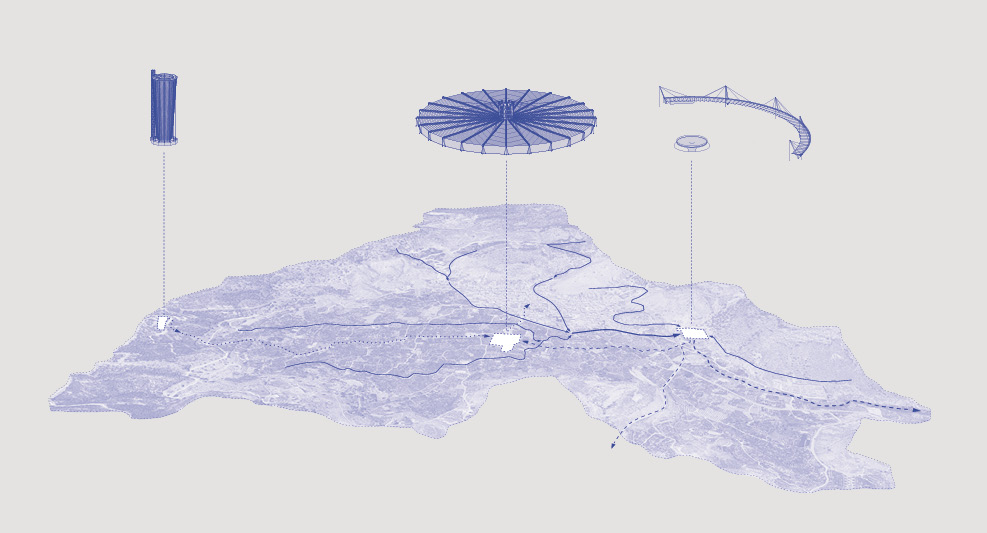

Sigurd Røsok / sgrd.rsk@gmail.com / #studiorosok
The first project is situated near the entrance to the valley of Ricote, on the top of a hill with a view towards the town. Today the site contains the remains of an old abandoned hotel that recently has been proposed to be remodeled. Since this will be the first meeting with the town of Ricote, it is chosen as the site to introduce the first step of the water supply chain: How to get more water. In order to acheiv this, a water harvesting tower also known as an air well is proposed on the site. In addition the tower will also serve as a viewing platform for visiting tourists. The tower will supply the new hotel with water as well as the new proposed nursery further down in the valley. The water is produced by cooling down the hot, moist air using cooling panels. This creates condensation on the panels that can be collected. The panels are tilted so that the water will run off and have a hydrophilic coating on one side and an insulating layer on the other. This process has traditionally been highly energy consuming and inefficient, but with recent advances in material technology and sustainable energy sources the option has become more reasonable
The second project is a fruit tree nursery. The structure will also host the social programs already present on the site. This includes a funeral home, a community space and a kindergarten. The valley of Ricote is known for their lemon production and this facility will provide the entire valley with all the new trees that are planted each year. The agriculture sector in the Segura basin consumes around 86% of all available water resources. Even if an efficient irrigation method is used most of the water is lost to evaporation as a result of photosynthesis. In open air farming this water is almost impossible to recover. That is why a nursery with a sealed closed hydrological system is proposed to illustrate an alternative method of farming where the used water can be recaptured and reused. The water demand for growing lemon trees is greatest during the plant’s first years of growth and a nursery will take advantage of the water-saving potential during this period.
The last of the three projects tackles some of the many challenges related to flood. Even though the Segura basin receives a scarce amount of rain during a year, it is not uncommon that most of the annual rainfall comes as torrential rain during short periods of time. This has led to many disastrous floods and preventive measures are constantly being taken into action in order to prevent new ones. In addition to constructing flood barriers the main strategy has been to channel the flood water towards areas where it poses a lower threat, mainly towards the Mediterranean sea. This is being achieved by straightening parts of the river and introducing parallel flood channels. Even though this decreases the amount of incidents it also increases the potential harm should an extreme situation occur. The project on the 3rd site illustrates an alternative option to this strategy. By capturing and storing the water locally, in an underground cistern at the lower end of the valley, it is possible to limit the amount of water that could cause a potential overflow further downstream. The space above the cistern will be utilized as a RV-park for visiting tourists. During drier periods the water can either be used locally, transported to other areas through the Tajo-Segura aqueduct or released slowly into the Segura river.


Sigurd Røsok / sgrd.rsk@gmail.com / #studiorosok

